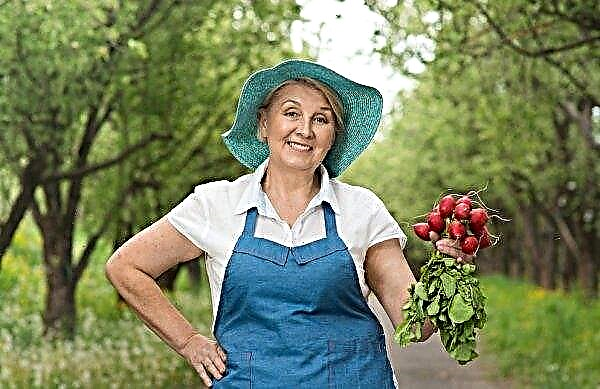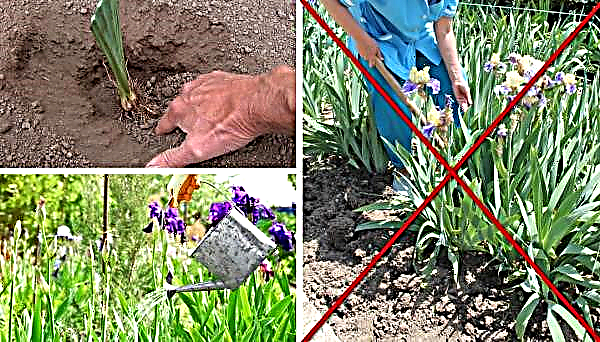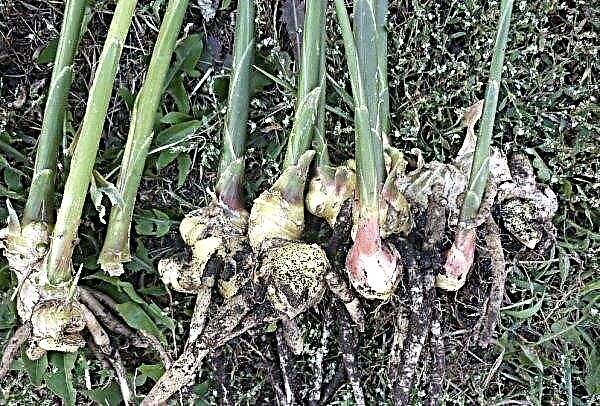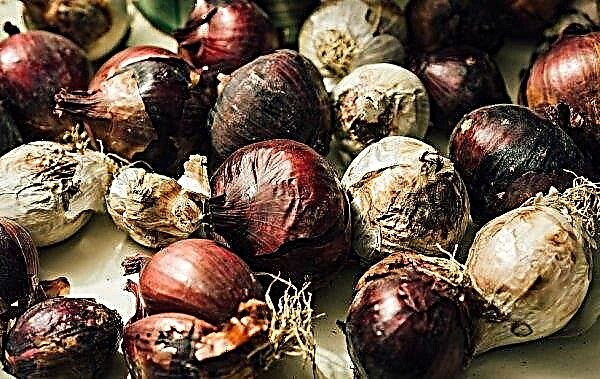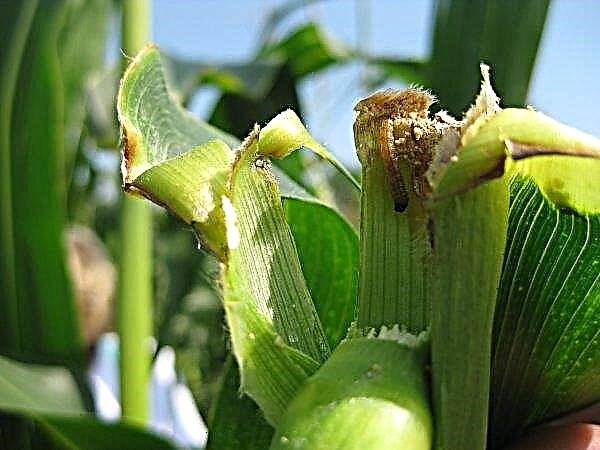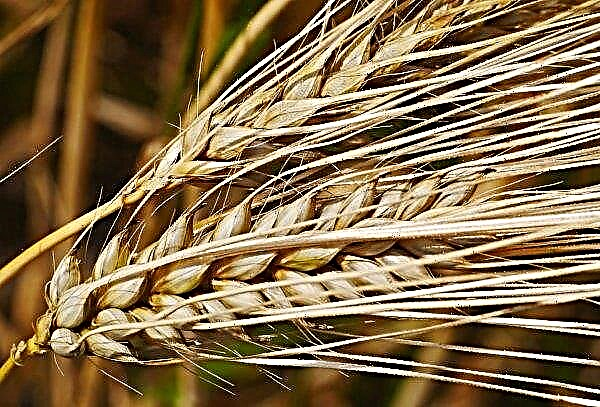A few decades ago, bushes and rhododendron trees were rare exotic, but recently only a few gardeners have not tried to grow it in their flowerbed, garden plot or on the windowsill. Representatives of this kind will be discussed in the article.
What is rhododendron?
Rhododendron belongs to the plants of the Heather family. This genus combines evergreen, deciduous or semi-deciduous shrubs and trees. In Greek, "rhododendron" means rhodon - rose and dendron - tree. Scientists have recently concluded that azaleas are also rhododendrons. But in catalogs, as before, there are both names. In everyday life, everything that is grown indoors is called azaleas, and that in open ground is called rhododendrons. As a result, both names have equal rights to exist.
Important! Poisonous substances contain many garden plants. For example, in the flower buds of large-leaved hydrangea contains a lot of cyanide, and in the yew berry poisonous alkaloids are present in wood, needles, young shoots and bark.
In nature, plants can grow up to 100 years, and in culture - up to 50 years. These plants appeared in Europe about 200 years ago, and at the beginning of the 19th century there were only 15 species. But thanks to the good ability to select, thousands of varieties and species of this culture are known today. Some representatives of the genus contain in the composition of the toxic component andromedotoxin or rhodotoxin. This diterpene is present in many heather and is a neurotoxin. This toxin initially causes a strong excitation of the central nervous system, and later - its strong inhibition. Such exposure can be fatal.
In human life, this beautiful representative of the flora has wide application:
- the plant is used for landscaping. It can be planted in group plantings, as borders or hedges, as a tapeworm. Low-growing representatives are often grown indoors;
- tannins contained in rhododendron, tannins, volatile, essential oils and much more, give it healing properties. Preparations made from plants have bactericidal, antipyretic, analgesic, and other beneficial effects;
- extracts of essential oils used in the perfume industry for the production of perfumes.
Botanical Description
The increased interest in plants of this genus is explained by the decorative leaves and the variety of forms of the bush. But the most attractive are the magnificent flowers of various colors. The genus includes a large number of different plants. Among them, you can find trees with a height of 6 m to 20 m, and shrubby forms (from 80 cm to 2 m). There are bushes forming low (about 30 cm) pillows, as well as creeping species.
Did you know? Xenophon chronicles mention the inappropriate actions of the Greek army soldiers who consumed honey collected by bees from rhododendron flowers.
The description of rhododendrons is as follows:
- white, pink, lilac, red or other colors of bisexual flowers, collected in a brush in the form of an umbrella or shield. The corolla may be funnel-shaped, tubular, cupped or bell-shaped. The size of the flowers can vary from a few millimeters to 20 cm. After flowering, the fruit is formed in the form of a box of 5 valves, which is filled with a large number of small (up to 2 mm) seeds;
- leathery decorative leaves are oval and have a glossy surface. They can be placed on petioles or be sedentary;
- branching crown consists of thin, smooth or with an edge, shoots;
- superficial roots are short and fibrous, with a large number of small roots.
The main characteristics of the plant
Rhododendrons are characterized by such indicators:
- depending on the variety bloom from April to June. In rare cases, this process can be repeated (August - September). On average, the flowering period lasts about 16-20 days. In some species, it is longer - up to a month;
- the flower is quite cold-resistant and relatively winter-hardy. The place of growth of rhododendrons in nature is the mountainous northern slopes, abundantly covered with snow, which protects plants from frost. On personal plots in cold snowless winters, additional shelter of the bush with special material is required. This primarily refers to the evergreen representatives;
- these are hygrophilous plants. They grow well in conditions of moderate humidity. The level of this indicator can be adjusted by planting in the shaded area, spraying the crown and frequent watering;
- rhododendrons - symbiotic cultures. Hyphae of mycorrhizal fungi form on their roots, which help plants absorb nutrients from the soil. For these fungi, air access is necessary, therefore, the root system of rhododendrons is quite compact and is located close to the soil surface. In "home" instances, the roots are somewhat more powerful.

Where does the shrub grow
Rhododendrons are ubiquitous, but mainly in the temperate and subtropical climatic zones of the Northern Hemisphere. Their greatest abundance is observed in East Asia and the Himalayas. In the southern hemisphere, they can be met in northeast Australia and in New Guinea. Under the natural conditions of Russia, up to 18 species are found, mainly in the Caucasus, Sakhalin, the Far East and Siberia. Wild species prefer mountainous areas, coastal zones of rivers and reservoirs..
Important! In conditions of central Russia, it is recommended to choose varieties that are more resistant to cold for the garden: Grandiflorum, Caraktacus, Album Novum, Elite, etc.
The optimal conditions for most representatives are partial shade, acidic soil, and high humidity (soil and air). A good option is considered to be a neighborhood with conifers, which in winter protect from cold winds, and in the summer from scorching sunlight. The northern mountain slopes provide a sufficient amount of precipitation without stagnation of water, the excess of which flows down. Rhododendron can be found both singly and in group plantings.
Popular types of rhododendrons
Among the wide variety of rhododendrons, there are some of the most popular species. Further - briefly about some of them.
Canadian
Rhododendron Canadian is a deciduous shrub reaching a meter height. Its green with blue leaves are elliptical. The flowers are painted in a pinkish-lilac color. Flowering in April - May.
Daursky
This deciduous plant is characterized by strong branching and a wide spreading crown. It grows in height up to 2–2.5 m. Green oblong leaves (up to 5 cm) are placed on short petioles. The flowers are fragrant, pink-purple in color, funnel-shaped. Flowering begins in mid-April and lasts about 3 weeks.
Video: Rhododendron Daursky
Caucasian
The name indicates the distribution area. It grows at an altitude of 1600-3000 m above sea level. Has lying stems up to half a meter high. The leaf plate is oblong-oval in shape, its lower part is covered with a red felt coating. Flowers collected in an inflorescence umbrella. Three-centimeter whisk has a color from white to light pink or light cream. This melliferous shrub has medicinal properties and acts as a soil fixer on the mountain slopes.
Deciduous
Different varieties of deciduous representatives can grow from 1 m to 8-10 meters. Low-growing crops will look beautiful as hedges of parks and squares. Inflorescences can have from several pieces to several tens of flowers. Large enough flowers strike an abundance of color. Yellow is characteristic of Klondike, Anneke and other sub-grades, pink - for Ghent sub-grades, etc.
Video: rhododendron deciduous
Rhododendron adams
This branchy shrub occupies the territory of highlands. It grows to a height of half a meter. The shoots are hairy. Evergreen foliage (1 to 2 cm) is dull green above, and red below because of scales. The flowers are pink or light pink and collected in inflorescences of 7-15 pieces. Flowering occurs in June - August. Rhododendron Adams is listed in the Red Books of such regions as Transbaikalia, Khabarovsk Territory, Buryatia and Sakhalin Region.
Evergreen
These rhododendrons do not drop foliage even in winter. The leaves only curl up in a winter tube, and in the spring regain their original shape. The specimens reach a sufficiently high size (up to 4 m). The leaves are leathery, dark green in color.
Did you know? Rhododendron is a symbol of Nepal. A garland of these flowers is placed on the country's coat of arms.
Large flowers (from 3 to 15 cm) are distinguished by a variety of colors. Most often they have the shape of a bell and are placed in inflorescences of several pieces. Fruits in the form of a five-leafed box ripen in August - September. Several varieties belong to the evergreen rhododendron: Roseum Elegans, Katevbinsky, Adams and some others. This heather flora representative is ideal for any design and will delight owners with its appearance for many years. A large species and variety variety will enable each gardener to choose the most suitable specimen for him.
Several varieties belong to the evergreen rhododendron: Roseum Elegans, Katevbinsky, Adams and some others. This heather flora representative is ideal for any design and will delight owners with its appearance for many years. A large species and variety variety will enable each gardener to choose the most suitable specimen for him.

